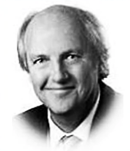
Howie's column is powered by Lyric Kitchen · Bar
The City of Duluth calls it a balanced budget. I call it an optical illusion.
On the surface, Duluth’s 2026 spending plan looks tidy — $112.9 million in, $112.9 million out. Budgets don’t lie with numbers but with structure. And Duluth’s is built like a magician’s deck of cards — one hand waving balance while the other tucks obligations under the table.
The public sees the General Fund. Insiders know the real story lives in the side accounts, transfers, and debt schedules buried dozens of pages deep. That’s where the truth hides — not in the totals, but in the timing.
City leaders like to say Duluth’s budget balances every year. Technically true. But that’s because state aid and internal transfers fill the holes. Local Government Aid alone covers nearly $35 million, about one-third of the budget. It’s the difference between black ink and red.
Lose even 5 percent of that aid, and Duluth’s “balanced” budget implodes by millions. That’s not financial strength — that’s dependence disguised as stability.
Meanwhile, personnel costs eat 83 percent of spending. That means every raise, every insurance bump, every pension increase ripples through the entire budget like a tax hike in disguise. But you won’t see that phrased that way in the narrative — it’s buried in the footnotes.
Thc city's debt-service tab jumps from $14.9 million to $16.8 million — a 12 percent jump that nobody’s talking about. It’s brushed off as “routine payments,” but that’s only part of it.

In 2026, Duluth will quietly add a $20 million bond issue under the Clean Water Surcharge Fund. It doesn’t appear in the general fund summary, so the public never sees it. “Utility-supported,” they say. Translation: another IOU.
Add a $4.57 million tourism-tax bond, and Duluth is now borrowing in three directions — on property taxes, on water rates, and on tourism receipts. Three different pockets, same pair of pants.
The result? Total net direct debt is around $34 million — still under the state cap, but creeping upward. Each new bond pushes annual payments higher, limiting what the next administration can do. It’s debt-service quicksand: once you’re in it, every new promise sinks faster.
Why was a $4.57 million tourism-tax bond tucked quietly onto the council’s consent agenda with no public discussion? What, exactly, is it paying for?
The bonding will pay for improvements for the Enger Park Golf irrigation system, Wade Stadium walls, windows and roof, Gary New Duluth skatepark and community center, and Spirit Mountain Nordic Center snowmaking equipment and lighting, City Administrator Matt Staehling said.
Has City Hall just traded away future tourism-grant dollars for another round of capital spending? Are Visit Duluth, the DECC and the city’s small-event ecosystem about to feel the squeeze
"This does not impact the grant program administered by Visit Duluth," said Staehling. "The city’s ½ and ½ tourism tax collections may only be used to make debt service payments on bonds issued to support capital improvements to public facilities to support tourism and recreational activities in that portion of the city west of 14th Avenue West and the area south of including Skyline Parkway (generally St. Louis River Corridor), and capital improvements to parks-based public athletic facilities to support sports tourism.
"The city will continue to collect the 1/2 and ½ tax until collections are sufficient to satisfy all bond payments associated with debt issued in accordance with the ½ and ½ tax legislation."

Why was this authorization placed on the consent agenda rather than introduced and discussed publicly during the budget process?
"Minnesota cities routinely issue bonds to finance public improvements. The City of Duluth is no different," said Staehling. "This bond issue does not impact the general fund budget and is a separate and distinct financing tool related to sports and athletic tourism. The consent agenda was preceded by an open public forum. No public comments were received relating to this agenda item."
These aren’t gotcha questions; they’re the ones any responsible taxpayer would ask.
Flip to the back of the budget book — the part few councilors read and almost nobody questions — and you’ll find the transfers.
Roughly $5.4 million leaves the General Fund each year for other funds. That’s money that’s already been taxed and counted as “spent,” moving again out of sight.
Transfers are the city’s hidden arteries. They quietly backfill shortfalls in special funds and utilities, letting administrators claim those funds are “self-sustaining.” They aren’t. They’re propped up by quiet shuffling — and it’s perfectly legal.
The trick is that every transfer blurs accountability. When dollars flow through three funds before reaching a project, no one can say what the real cost is anymore.
The budget sets aside less than 1 percent of the General Fund for capital improvements. One percent.
That’s a city with aging water lines, leaky buildings, and a century of deferred maintenance pretending that everything’s fine. But the fix is never in the General Fund — it’s in the bond funds.

That’s how Duluth can underfund maintenance year after year and still open ribbon-cuttings for new projects. The bill is just floating elsewhere, with interest.
It’s the civic version of replacing your roof with a home-equity loan and telling your spouse it came from “savings.”
The budget narrative tells taxpayers everything is within policy. And it is — because the policy itself moves with the numbers.
Debt service increases? No problem, policy still met. Fund reserves dip? Policy threshold quietly adjusted. “Within limits” means nothing when the limits shift to match the spending.
That’s how Duluth keeps saying yes — yes to raises, yes to new projects, yes to another bond — without technically breaking a rule. The rules evolve to fit the practice.
So, is there bloat? Absolutely.
Not the kind you see on talk radio, but the quiet, structural bloat that never gets cut because it’s built into the DNA.
Administration, HR, IT, legal — none of these shrink even when headcount does. Consultant costs slide between years. “One-time” software upgrades somehow recur annually.
It’s bloat by inertia. Nobody’s stealing; they’re just not stopping.
Even the four position cuts in 2026 barely register — a rounding error in a payroll that tops $60 million. The raises, benefits, and reclassifications more than cancel them out.

And so the machine keeps humming, more expensive every year, producing the same output.
Every time the city borrows for something essential — clean water, roads, parks — the language gets softer. “Strategic investment.” “Infrastructure renewal.” It sounds smart. Responsible.
But those phrases are camouflage for what’s really happening: borrowing for operations under the banner of progress.
That $20 million clean water bond? Necessary, yes. But also evidence of how far behind Duluth’s pay-as-you-go discipline has slipped. That work should’ve been funded over years — not suddenly in one giant loan.
The City of Duluth’s two major 2026 bonding requests serve different purposes and are backed by separate revenue streams.
The $20 million bonding request is for water infrastructure improvements — primarily system reliability, lead service line replacements, and upgrades at the aging Lakewood Water Treatment Plant. This is considered an essential service investment, funded and repaid through utility revenues and ratepayer dollars. The focus is on public health, regulatory compliance, and maintaining core infrastructure for residents.
The $4.7 million bonding request falls under tourism and economic development. It’s tied to visitor-oriented projects — such as river corridor recreation, sports and event venues, and related public improvements — and would be repaid from tourism tax revenues (hotel/motel and food-and-beverage collections).

In short:
. The $20 million bond addresses essential, resident-facing infrastructure.
.The $4.7 million bond supports tourism-driven development paid for by visitor taxes.
Both are borrowing tools, but they draw from different funding sources and serve different long-term goals.
By using long-term debt to plug short-term neglect, Duluth disguises the cost of yesterday as tomorrow’s opportunity.
Strip away the jargon and you’re left with this: Duluth spends nearly everything it earns, borrows for what it can’t, and calls it balance.
The numbers pencil out because they have to — that’s state law. But financial reality doesn’t follow law; it follows gravity.
When you owe more each year, spend more to stay even, and push every capital cost into future borrowing, you’re not balancing — you’re floating.
And one day, when interest rates rise or state aid dips or the next snowstorm knocks a hole in the capital fund, the float ends. Then comes the reckoning.
The 2026 Duluth budget isn’t fraudulent. It’s just crafted. Every line is technically correct — and strategically incomplete.
The debt’s real, the transfers are quiet, the obligations are permanent, and the optimism is optional.
That’s the budget they don’t want you to understand. It’s not a scandal. It’s a system.
And as long as Duluth keeps balancing on borrowed time, the books will look fine — right up until they don’t.




